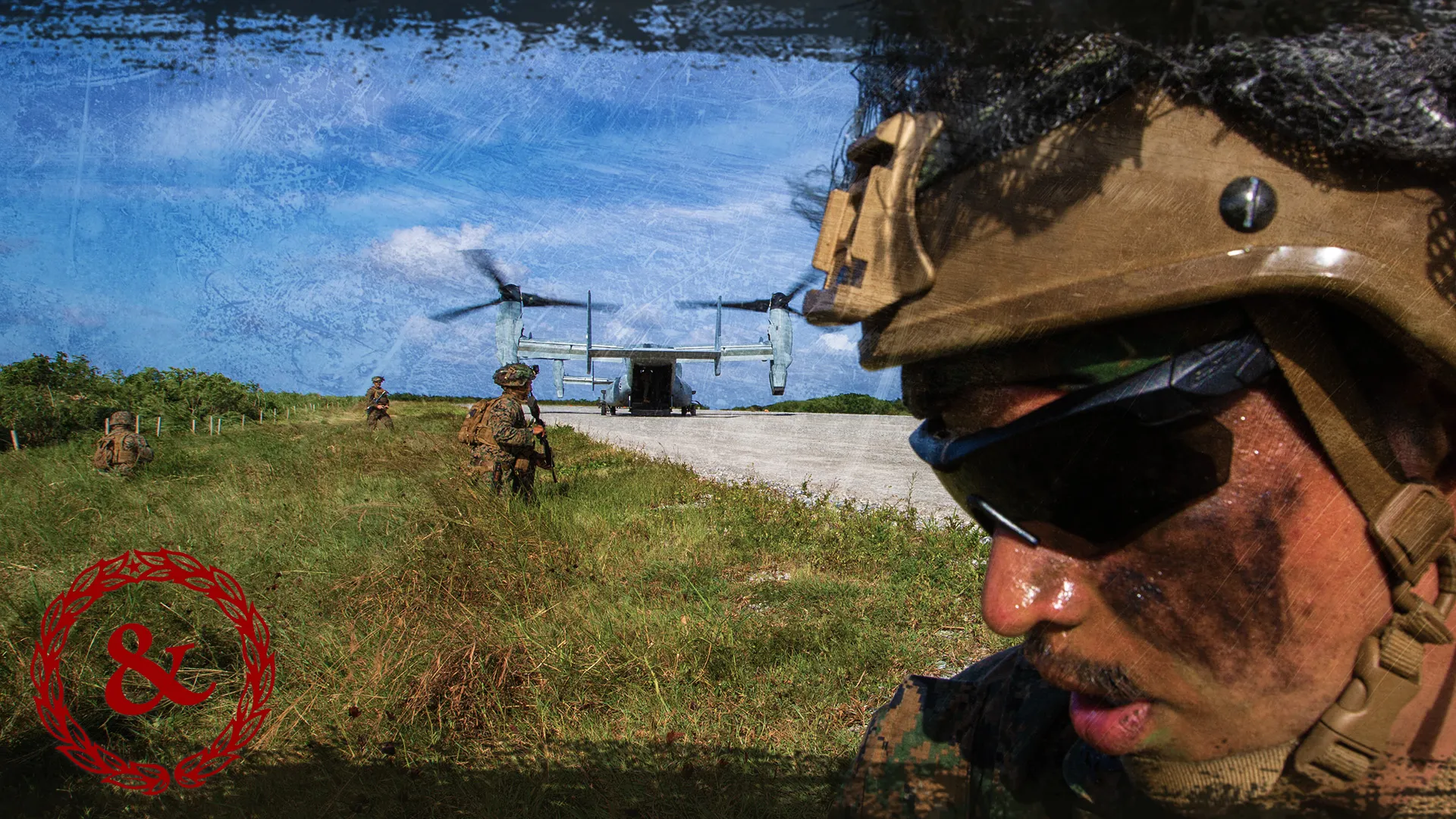 |
| Earlier this week, California Attorney General Rob Bonta announced that he would be releasing firearms data via the California DOJ’s Firearms Dashboard Portal. That data contained gun owners’ names, dates of birth, gender, race, driver’s license numbers, addresses, and NRA-ILA sued the California DOJ in January to stop it from releasing gun owners’ information to university professors for “research purposes.” Throughout this litigation, the Cal DOJ has maintained that it has “robust policies and procedures in place to ensure that personally identifying information is not disclosed to the public,” and that it had “instituted three steps to ensure that personal identifying information is not publicly disclosed.” And just this week Attorney General Bonta declared that the: “DOJ seeks to balance its duties to provide gun violence and firearms data to support research efforts while protecting the personal identifying information in the data the Department collects and maintains.” The court, understandably, relied on those repeated assurances and declined to issue a temporary restraining order blocking the Cal DOJ from releasing gun owners’ information. But those promises turned out to be empty, and those safeguards turned out to be nonexistent. That is why NRA-ILA asked the court to reconsider its decision on the temporary restraining order. Whether the leak was the result of malice or extreme negligence, the Cal DOJ must be held accountable for its shortcomings. NRA-ILA will continue to prosecute this case until that happens. The case is captioned Doe v. Bonta. |
 |
| The California Legislature starts their Summer recess today, but not before a busy week full of defiant action against the recent Supreme Court victory in the NRA case of NYSRPA v. Bruen. The legislature passed several anti-gun bills out of policy committees and passed eight anti-gun bills onto the Governor’s desk, two of which he signed yesterday immediately after receiving them. With this swift action, the NRA is continuing to fight these proposals and looking at all available options including litigation. Contact Governor Newsom at (916) 445-2841 and urge him to veto AB 311, AB 1594, AB 1769, AB 2156, SB 915, and SB 1327!
Signed by the Governor Assembly Bill 1621, introduced by Assembly Member Mike Gipson (D-65), expands what is considered a “precursor part” under existing law and requires serial numbers on those parts. Further, it expands the definition of “firearm” for purposes of criminal and regulatory penalties to include “precursor parts.” And finally, it prohibits the possession, transfer, sale, or advertising of milling machines that have the sole or primary purpose of manufacturing firearmsto anyone other than licensed firearm manufacturers or importers. . *AB 1621 was passed with an urgency clause meaning it went into effect immediately. Assembly Bill 2571, introduced by Assembly Member Rebecca Bauer-Kahan (D-16), bans advertising or marketing firearms or ammunition in a way that is “attractive to minors,” replacing the language in current law banning specifically “advertis[ing] to minors.” This legislation is so broadly worded that it will be devastating to conservation, safety, and education efforts throughout the state. *AB 2571 was passed with an urgency clause meaning it went into effect immediately. Passed by the Legislature and Will Soon Be Eligible for the Governor’s Consideration: Assembly Bill 311, introduced by Assembly Member Christopher Ward (D-78), prohibits the display or sale of any “precursor firearm parts” at gun shows on the Del Mar Fairgrounds of the 22nd District Agricultural Association. Assembly Bill 1594, introduced by Assembly Member Phil Ting (D-19), creates a private right of action against firearm industry members for failure to implement “reasonable” controls. This intentionally vague term can subject the industry to crippling lawsuits regardless of whether there is any actual violation of law. Assembly Bill 1769, introduced by Assembly Member Steve Bennett (D-37), prohibits officers, employees, operators, lessees, or licensees of the 31st District Agricultural Association from entering into any agreement to allow for the sale of any firearm, firearm parts, or ammunition on property or buildings that comprise the Ventura County Fair and Event Center or properties in Ventura County and the City of Ventura that are owned, leased, operated, or occupied by the District. Assembly Bill 2156, introduced by Assembly Member Buffy Wicks (D-15), reduces the number of firearms a private citizen can manufacture in a year from 50 to no more than three. In addition, it prohibits private citizens from using 3D printing to make firearms, precursor parts, or magazines. Senate Bill 915, introduced by Senator Dave Min (D-37), bans state officers or employees, operators, lessees, or licensees from entering into any agreement to allow for the sale of any firearm, firearm precursor parts, or ammunition on property that is owned, leased, occupied, or operated by the state. Senate Bill 1327, introduced by Senator Robert Hertzberg (D-18), creates a private right of action that allows individuals to file civil suits against anyone who manufactures, distributes, transports, sells, or imports firearms banned in California, as well as precursor firearm parts. Current law already allows for remedies for illegal activities by firearm dealers and manufacturers. Passed by the Assembly Public Safety Committee Senate Bill 918, introduced by Senator Anthony Portantino (D-25), was amended to defy the recent Supreme Court ruling placing significant reforms on California’s existing conceal carry laws. Some of the provisions include: significantly expanding gun-free zones, requiring signage for private businesses where you “can” carry, doubling training requirements, and maintaining the ability to do in-person interviews, psychiatric evaluations, and allowing “time place, and manner” restrictions on permits. *SB 918 will be heard in the Assembly Appropriations Committee on August 3. Passed by the Senate Public Safety Committee Assembly Bill 1227, introduced by Assembly Member Marc Levine (D-10), was gutted and amended to contain language from Assembly Bill 1223. It places an excise tax of 10% on the sales price of a handgun, and places an 11% excise tax on the sales price of all long guns, rifles, firearm precursor parts and ammunition. These taxes are to be collected from California retailers and placed in a newly created fund for appropriation by the state legislature. *AB 1227 will be heard in the Senate Appropriations Committee on August 1. Assembly Bill 2870, introduced by Assembly Member Miguel Santiago (D-53), expands California’s gun violence restraining order to allow additional reporters, to now include roommates, dating partners, and additional family members, out to the 4th level of consanguinity and affinity (this could include out to the first cousin in-law or a great-great-grandparent). *AB 2870 has been referred to the Senate Appropriations Committee but has not been scheduled for a hearing at this time. Passed by the Assembly Judiciary Committee Senate Bill 505, introduced by Senator Nancy Skinner (D-9), makes a person who owns a firearm strictly civilly liable for each incident of property damage, bodily injury, or death resulting from the use of the firearm. Additionally, the legislation requires a firearm owner to obtain and continuously maintain insurance as well as keep evidence of this coverage with the firearm at all times. *SB 505 will be heard in the Assembly Appropriations Committee on August 3. |
ALBANY, N.Y. — New York would require people applying for a handgun license to turn over a list of their social media accounts so officials could verify their “character and conduct” under a bill headed toward passage Friday in the state Legislature.
The provision was part of a proposed redesign of the state’s firearms licensing laws hammered out by lawmakers after the U.S. Supreme Court struck down rules that had severely limited who could get a permit to carry a handgun outside their home.
A bill advanced by Democratic leaders would eliminate the most strict barriers to getting a permit but also impose new requirements for applicants.
Among the requirements: Applicants would have to show they have “the essential character, temperament and judgment necessary to be entrusted with a weapon and to use it only in a manner that does not endanger oneself and others,” according to the bill.
And as part of that assessment of good character, the bill says, applicants would have to turn over a list of any social media accounts they have had in the past three years “to confirm the information regarding the applicant’s character and conduct.”
“Sometimes, they’re telegraphing their intent to cause harm to others,” Gov. Kathy Hochul, a Democrat, said at a news conference.
Gun rights advocates and Republican leaders were incensed, saying the measure intrudes on constitutional rights.
“What is being proposed in New York is a violation of Second Amendment rights, but they are also asking you to sign away your privacy rights for social media accounts, signing away your First Amendment rights,” said Mark Liva, the National Shooting Sports Foundation’s managing director of public affairs. State Republican Chair Nick Langworthy said “New Yorkers’ constitutional freedoms were just trampled on.”
The bill didn’t specify whether applicants would be required to provide licensing officers with access to private social media accounts not visible to the general public.
People applying for a license to carry a handgun would also have to provide four character references, take 16 hours of firearms safety training plus two hours of practice at a range, undergo periodic background checks and turn over the contact information of their spouse, domestic partner or any other adults living in their household.
Aaron Dorr, the executive director of the New York State Firearms Association, called the measure “the kind of bill that the Gestapo would be proud of” or “you’d see in Communist China.”
“This will never survive a court challenge,” he said.
Hochul’s chief lawyer, Elizabeth Fine, insisted the state was setting out “a very clear set of eligibility criteria” and noted that the legislation includes an appeals process for applicants who may feel a reviewer acted inappropriately.
The state Senate approved the measure Friday during a special legislative session called to address the state’s gun laws. The Assembly was expected to consider the measure later in the day.
The Supreme Court ruling struck down a previous rule requiring people to demonstrate an unusual threat to their safety to get a license to carry a handgun outside their homes. That restriction generally limited the licenses to people who had worked in law enforcement or had another special need that went beyond routine public safety concerns.
Under the new system, the state wouldn’t authorize permits for people with criminal convictions within the past five years for driving while intoxicated, menacing or third-degree assault.
People also wouldn’t be allowed to carry firearms at a long list of “sensitive places,” including New York City’s tourist-packed Times Square.
That list also includes schools, universities, government buildings, places where people have gathered for public protests, health care facilities, places of worship, libraries, public playgrounds and parks, day care centers, summer camps, addiction and mental health centers, shelters, public transit, bars, theaters, stadiums, museums, polling places and casinos.
New York would also bar people from bringing guns into any business or workplace unless the owners put up signs saying guns are welcome. People who bring guns into places without such signs could be prosecuted on felony charges.
That’s a reverse approach from many other states where businesses that want to keep guns out are usually required to post signs indicating weapons aren’t allowed.
Gun advocates said the bill infringes on rights upheld by the Supreme Court.
“Now we’re going to let the pizzeria owner decide whether or not I can express my constitutional right,” said Sen. Andrew Lanza, a Staten Island Republican. “This is a disgrace. See you in the courts. You all know this is unconstitutional. You all know this is just a ruse. Another attempt to say to the people of the state of New York: ‘We don’t trust you.’”
The bill would also fix a recently passed law that barred sales of some types of bullet-resistant vests to the general public, but inadvertently left out many types of body armor, including the type worn by a gunman who killed 10 Black people in a racist attack on a Buffalo supermarket.
If passed, the bill would go to Hochul’s desk for her expected signature, then take effect Sept. 1.
———
Associated Press/Report for America writer Maysoon Khan contributed to this report. Maysoon Khan is a corps member for the Associated Press/Report for America Statehouse News Initiative. Report for America is a nonprofit national service program that places journalists in local newsrooms to report on under-covered issues. Follow Maysoon Khan on Twitter.

In 1989, then-Commandant of the Marine Corps Alfred M. Gray reenergized the post-Vietnam Marine Corps with the publication of Warfighting, a visceral statement of the Corps’ combat, leadership, and adaptability doctrine that spoke as much to who Marines are as what they do. Thirty-three years later, the thin manual is known today as Marine Corps Doctrinal Publication One and still canonizes the fighting philosophy of the Marines. But Warfighting has always been controversial. It was written quickly and quietly, by one Marine captain working directly for the Commandant and with minimal input from the broader Marine Corps. Gray’s approach — jamming through innovation against strong headwinds — seems echoed today by Commandant David H. Berger’s efforts to change the design of the Corps with an audacious document called Force Design 2030 (FD 2030), a fact that seems somewhat ironic given the stiff opposition he faces from some of Warfighting’s most ardent advocates.
In Warfighting, the sole author, a Marine captain named John Schmitt, synthesized martial theories and enduring truths about the nature of war. War is a violent struggle between two hostile, independent, and irreconcilable wills; dynamic, uncertain, and chaotic. War is a process of continuous mutual adaptation, of give and take, move and countermove. Speed is a weapon; boldness a source of combat power. Sharp observers of the current war in Ukraine see these truths played out daily. Warfighting is a relatively simple statement of the essential beliefs of the Corps, intentionally written for riflemen and commanders alike. Therein lies its genius.
But Warfighting has always had its critics, and with only one minor revision in 1997, it is aging. In The Blind Strategist, Stephen Robinson rips Warfighting down to the studs. His analysis of American wars since the document’s inception finds far more examples of Marines professing adherence to Warfighting’s maneuver warfare than any actual execution thereof. Moreover, the elegant language that captivated some Marines in the late 1980s reads like a boring history lesson for some Marines today. In 2020, Capt. Walker Mills argued that Warfighting teeters on the verge of irrelevance for its lack of a mention of irregular war, great power competition, or even the Marines’ naval character. He called it an industrial age philosophy for an information age Marine Corps. Mills’ last point hits the hardest, driving at the heart of the very public and ugly debate over current Commandant of the Marine Corps Gen. David H. Berger’s FD 2030.

Instead of massing to fight a 20th century maneuver ground war using tactics applied by the German Wehrmacht — more on this uncomfortable lineage later — under Force Design 2030, or at least the initial version, Marines will disperse to fight in small groups, relying upon stealth for survivability and striking at adversaries with long-range precision weapons. For a service that still derives much of its identity from a history of charging across wheatfields or beaches through storms of steel, it is an undeniable cultural shift.
Since its release, Berger has come under heavy fire from retired Marine generals. Former Commandant Charles C. Krulak led the attacks against Berger’s force design. Along with Gens. Anthony Zinni and Jack Sheehan, Krulak attacked Berger’s plan for discarding the tanks and artillery central to conventional warfare, and maneuver warfare within it. Krulak has since called for a ceasefire because “the discussion about Force Design 2030 and the future of our beloved Corps is degenerating into a partisan street fight, complete with much disinformation, straw man characterizations of opposing positions and slanderous ad hominem attacks.” The internecine firefight has not been lost on Congress, with Marine veterans and Reps. Seth Moulton and Mike Gallagher penning a bi-partisan editorial supporting Berger’s plan, cosigned by six additional Marine veterans now serving in the House.
Critics of Warfighting also argued against what they perceived to be radical change. In 1995, Marines like Lt. Col. Stephen Lauer slammed Warfighting as a rejection of the realities of war, a “tactical dogma” ignoring what he believed to be the Marine Corps’ historically disciplined, do-as-I-say approach to combat leadership. Gray, Krulak, Van Riper, and others had to push past those counterforces within the Marine Corps to make Warfighting a reality.
So, is Warfighting dead text? Does Force Design 2030 represent the new reality of war? Or is there a Venn overlap of unrecognized truth between these two radical documents? And are they really, truly radical? At least one is.
Screw the rules: How Warfighting came to be

Al Gray remains a Marine Corps icon. Gray was an enlisted Marine; a veteran of combat in Korea and Vietnam who once walked into a minefield to save a wounded Marine. He was one of the Corps’ great mavericks, the kind of Marine who dared to break rules, and succeed greatly, in an organization known for rigid standards. As commandant, Gray typically wore camouflage utilities rather than dress uniforms and regularly punched enlisted Marines in the chest — hard — to show affection. Warfighting was Gray’s vision and he bent rules and ignored the conventions of the Marine Corps’ often mind-numbing bureaucracy to bring it to life.
Gray was an impatient intellectual in a Corps suffering through a post-Vietnam anti-intellectual malaise. Commanding the 2nd Marine Division in the early 1980s, he declared maneuver warfare the official doctrine of his division. Then-Lt. John Schmitt was a platoon commander in 3rd Battalion, 6th Marine Regiment. He remembers being called to the base theater at Camp Lejeune along with every officer in the 2nd Marine Division, where Gray declared, “Maneuver warfare is the doctrine of Second Marine Division. Get on board or get left behind.” Though already a “maneuverist,” Schmitt could not have known how much that day would affect his future. Gray kept pushing forward with the maneuver warfare concept and in 1987 when he became commandant, he wasted no time cementing maneuver warfare as the Corps’ foundational doctrine, though years later he would say he regretted using the word doctrine instead of philosophy. It’s an important distinction as Warfighting is more about how Marines should think about warfare than how they should execute warfare.
In another maverick move, Gray ignored the line of colonels outside his office lobbying for the task of composing the document and assigned just one junior officer — then frocked Capt. John Schmitt — to write Warfighting alone and responsible only to Gray, an experience Schmitt now describes as “pretty surreal.” Still, Schmitt did regularly consult with now-retired Lt. Gen. Paul K. Van Riper, a man often recognized for his own martial innovation, as documented in Malcolm Gladwell’s Blink: The Power of Thinking Without Thinking and more deeply examined by Micah Zenko. Van Riper would ultimately be the man who carried Warfighting to the masses.
Maneuver warfare is at the heart and soul of the synthesis of ideas published as Warfighting. Building from B.H. Liddell Hart’s Strategy, Carl Von Clausewitz’s On War, and Sun Tzu’s The Art of War, it embraces warfare as a spiritual art in which the uncertainty and chaos inherent to war become opportunities from which to gain an advantage over the enemy. Marines operate not as puppets dangling from officers’ fingertips, but as semi-autonomous thinkers continuously adapting to find the best and fastest ways to win. Maneuver is primarily a psychological, not a physical concept. Physical movement and killing are always applied with one central intent: to break the will of the enemy. It is an ideal that has inspired warfighters, business professors, and Wall Street executives alike with its clarity, emphasis on initiative, and aggressive spirit.

As Schmitt was drafting Warfighting, building upon bottom-up momentum generated by informal Marine study groups, Gray brought Marine allies such as Van Riper and Cols. Michael Wyly and Patrick “Paddy” Collins to Quantico, Virginia, in what became known as the “Quantico Renaissance.” He also availed himself of outsiders like William “Bill” Lind and legendary Air Force Col. John Boyd to help plant his flag in the chest of an intellectually stultified Marine Corps. Lind was a controversial figure, an Ivy League scholar of German history with no military experience, a gap that did not prevent him from claiming to have started the debate over maneuver warfare in the 1970s. Boyd was best known for describing the OODA loop, an air-to-air combat concept he broadly applied to ground war theories. Lind and Boyd were both fans of the closely related German military concepts of Blitzkrieg, or “lightning war,” and Auftragstaktik, or mission command, and of Liddell-Hart’s belief in the indirect approach to warfighting.
Gray gave Schmitt minimal guidance. In fact, Schmitt says, Gray refused to give any direct guidance. Instead, the commandant spoke in parables, Schmitt recalled to Task & Purpose.
“I would ask him what he thought and he would look at me and say, ‘Let me tell you a story about Little Al Gray.’ What he was doing was maneuver warfare,” said Schmitt. “He made sure I understood his intent, but he left it up to me to figure out how to accomplish the mission.”
Gray met with Schmitt only twice during the writing process, then signed off on the draft with only one change. Where Schmitt had written within the introduction a charge for every Marine to read Warfighting, Gray inserted, “…and re-read.” If Warfighting had turned out to be just another military document; written, published and largely ignored, this would still be a remarkable story. But it wasn’t remotely ignored.
Schmitt wrote well, distilling the best parts of Clausewitz and Sun Tzu into prose accessible to the Marines who would do the actual fighting. Warfighting has since spawned a series of equally compelling, readable Marine Corps doctrinal publications, or MCDPs, on everything from campaigning to leadership to intelligence. Schmitt had a hand in many of these as well. Taken together, the books anchor Marine Corps training and education. But when it comes to institutional change, the messenger matters as much as the message.
The guest who wouldn’t leave: Bill Lind versus the Marine Corps
Getting an organization of 200,000 people to buy into a book like Warfighting requires salesmanship, a painful lesson Commandant Berger is now learning two years into the life of FD 2030. Gray’s acolytes, including Van Riper, pushed hard to get Marines to adopt all aspects of maneuver warfare. The hard push was only partially successful.
Some shortcomings embedded in the text itself created unavoidable sales challenges. Retired Marine colonel and historian Matt Jones argues that just about everyone agrees with the Clausewitzian nature-of-war descriptions in the first two chapters of Warfighting, concepts broadly accepted across Western militaries. But Jones and others find the last two chapters less convincing, too esoteric, and overly prescriptive. As an example of the contrast, many Marines loved the idea of mission command — being given leeway to adapt and operate without micromanagement — but didn’t quite know what to do with concepts like “surfaces and gaps,” in which the unleashed war machine was analogized to water flowing across the battlefield to find the points of least resistance. Van Riper, Schmitt, and others in Gray’s inner circle needed all the help they could get in selling Warfighting in some parts of the Marine Corps, but while they were energizing Marines with the best parts of Warfighting, Bill Lind was alienating Marine leaders well-positioned to undermine Gray’s initiative.

It is hard to find Marines who served in the 1980s or 1990s who have fond memories of Bill Lind. Even before Gray ascended to commandant, Lind wrote an article in The Washington Post calling senior Marine officers inept for failing to prevent the 1983 Beirut barracks attack and personally criticized then-Commandant P.X. Kelley for refusing to embrace his ideas about war and tactics. In the same article, he described war as an intellectual chess match, taking the idea of winning without fighting to an unrealistic extreme. According to Lind, the purpose of a rifle is not to kill, but to suppress the enemy so he can be outmaneuvered. That notion didn’t wear well in a Marine Corps culturally centered on good old-fashioned rifle killing at close range.
Gray and Lind were both enamored of German military concepts from the world wars. But Lind pushed the German example to the point that it became repellent, often showing up unannounced and wearing an ersatz German officer’s uniform at Marine planning sessions, exercises, and training schools like the Infantry Officer Course. Lind had the often-infuriating habit of telling even the most talented Marine officers they were wrong or simply stupid before quoting German Wehrmacht doctrine to set them straight. Many of these officers — all aware that Lind had no actual military experience and that the Germans had lost both world wars — went on to become colonels and generals. They remembered Lind’s words and demeanor and could not have helped associating it with maneuver warfare, a lingering resentment well documented in Marine Corps War College professor Jim Lacey’s 2014 article, “The Continuing Irrelevance of William Lind.” Despite Lind’s issues, Warfighting — a document written in isolation and rammed through the Marine bureaucracy by a maverick leader — remains the philosophical foundation of the Marine Corps. To some, it is ironic that several of its most loyal adherents are also the harshest critics of Commandant Berger’s FD 2030 initiative.
Maverick innovation redux: Force Design 2030

In March 2020, Gen. Berger released Force Design 2030, a document intended to ensure the Marine Corps could meet two challenges: “effectively playing our role as the nation’s naval expeditionary force-in-readiness, while simultaneously modernizing the force in accordance with the National Defense Strategy (NDS)…” This was a relatively anodyne statement for a document that signaled essential cuts and changes to the Corps’ longstanding structure. To its critics, FD 2030 was anathema to maneuver warfare, principles foundational to Warfighting.
In an article for Politico, Paul McLeary and Lee Hudson assert that a group composed of “every living former commandant, along with a slew of other retired four-star generals revered within the Corps…are bristling at different aspects of foundational changes introduced by Commandant Gen. David Berger…”. Former Senator and Secretary of the Navy James Webb, himself a revered Marine, puts the number at 22. Some of the most popular post-9/11 Marine leaders — James N. Mattis, Joseph F. Dunford, and John F. Kelly — may or may not be affiliated, but Gens. Krulak, Zinni, Sheehan, and Lt. Gen. Van Riper are decidedly the public face of a vociferously anti-FD 2030 movement.
By openly criticizing Berger — and the criticisms have sometimes taken on an uncomfortable, personal tone — the group of Marine leaders has traveled beyond normative rules for retired general officers, particularly in the stoic ranks of a service that values order and discipline. In an article on the subject, Former Deputy Secretary of Defense and retired Marine Robert O. Work calls the attacks “unseemly” and a “shakedown,” terms that are themselves starkly aggressive characterizations relative to the normal tone of senior executive communications. A day after Work’s article was published, Van Riper responded that FD 2030 constitutes an “existential threat” to the Corps. If true, FD 2030 might well justify the vitriolic public response from the retired Marine diaspora. Regardless of perspectives, based on their extensive service experience and demonstrated depth of love and commitment to the Corps, one must conclude the retired generals and Marine veterans are as genuinely concerned about the future of the Marine Corps as are the Commandant and his supporters. Their arguments deserve attention.
But is FD 2030 truly an existential threat to the Corps? John Schmitt thinks that’s the wrong question.
“The question is the impact on national security. I just don’t think a high-intensity fight with China in the Pacific is going to be the fight. I think the competition with China is going to take other forms in lots of other places. But if that does turn out to be the fight, I think other components of the force are better prepared and equipped for it,” said Schmitt.

“But with regard to Expeditionary Advanced Base Operations (EABO), if this is going to work, we have to commit forces to being inside the Weapons Engagement Zone (WEZ) before hostilities commence. FD 2030 is simultaneously shrinking the pool from which forces may be drawn and committing those reduced forces to a fight that may never come. There is an opportunity cost there.”
FD 2030’s critics’ central critique revolves around the shift to Asia and the focus on China as a pacing threat. They assert that if the Marine Corps focuses on fighting a long-range missile war with China, it will be inherently inflexible, a contravention of the Corps’ historic roles in both crisis response and support to standing war plans. Perhaps most heretically, goes the assertion, FD 2030 will leave the Corps incapable of dealing with the chaotic uncertainty, a factor central to the Marines’ Warfighting philosophy. As Schmitt offered, “When you’re designing your military, one of the main decisions is whether you prioritize the Big One, the existential threat that is frankly unlikely, or the lesser contingencies that are guaranteed. The Navy and Air Force have tended to prioritize the existential threat. The Army has tended to focus on the Big One with the ability to swing to the other contingencies. The Marine Corps, as the nation’s force-in-readiness, has focused on all the other stuff with the ability to shift over to existential fights as needed. Who handles the other stuff if the Corps is not? This seems like a pretty unilateral move by the Marine Corps.”
Marines certainly need to be available to fight in any conflict, anywhere, any time, but even with the significant changes in the appearance of some aspects of the Corps, Berger and other defenders of FD 2030 view this argument by its detractors as a canard.
The Commandant has been unequivocal in his evaluation of the Corps’ capability to meet the demands of the 2018 National Defense Strategy, which specifically directs the Department of Defense to focus on China as a “pacing threat.” Against that standard, Berger says the Marine Corps is “unsuited to future requirements in size, capacity, and specific capability.” It’s a charge more broadly echoed by Chairman of the Joint Chiefs of Staff Gen. Mark Milley regarding the entire U.S. Armed Forces.

“I believe we that we are in a fundamental change in the character of war, and by that I mean how you fight, where you fight, the doctrine, the equipment, the tactics, techniques and procedures, and so on,” Milley said recently. “We’re in the middle of a real, unbelievable fundamental change, which is probably the biggest fundamental change in the history of warfare.” Given those full-throated assertions, what does this force design — really, a force redesign — demand of the Corps?
According to the May 2022 update to FD 2030, Berger wants a Marine Corps that can do it all, centered on the ability to win wars. Marines have to be ready to help the joint force win global competition while staying purpose-built for naval campaigns, and also ready to support the full range of operations it has in the past: conventional war, counterinsurgency, humanitarian assistance, etc. In Berger’s view, lumbering armored columns won’t cut it in the fight against China, or even in Europe. Berger dropped the Corps’ tanks entirely, replaced most of its howitzers with rocket and missile launchers, and dropped 12,000 Marines from the rolls to pay for investments in advanced technology to help the Marines compete and win on the modern battlefield. Force Design 2030 is a shift intended to be supported by a “campaign of learning,” a program of design, experimentation, and force reduction that, as briefed, seems as audacious as…Warfighting.
But Berger’s interpretation of the modern character of war stands in stark contrast to that of the retired generals. That lack of buy in and, frankly, his salesmanship of both the document and its ideas has been lacking, a subject well understood by his opponents, who lived the opposition to Warfighting.
Some of the retired generals’ ire seems to have coalesced around the difference between what was intended versus what has actually happened. In their view — and at least to some extent, objectively — the hard cuts in capability came before the routine years of testing and experimentation were remotely completed. Put succinctly, they believe Berger has put the cart before the horse. Berger saw no other choice. He believed that if he let bureaucracy lead innovation, innovation would die. Certainly, there is precedent to support that view, but John Schmitt contrasts the cloistered FD 2030 process with the intellectual free for all that surrounded Warfighting and finds the current approach lacking.
“We had open and frank arguments about maneuver warfare on the pages of the Marine Corps Gazette. By the time Gray became Commandant and made maneuver warfare doctrine, there was institutional buy-in. I don’t think that’s happened here. Anytime you have a closed process, behind closed doors, you risk an echo chamber. John Boyd used to tell us, ‘Cast your net widely’ in pursuit of good ideas. A more open process would have taken longer but had a smoother time of it. Part of the reaction you’re seeing is pushback against the closed process. People don’t feel like they have a say or that their concerns have been heard. There is a lack of feeling of ownership.” Perhaps that’s part of why Berger pulled the trigger, trading consensus for speed and likelihood of success. It’s an issue also noticed by former Assistant Secretary of Defense for Special Operations and Low-Intensity Conflict Owen West, himself a Marine and the son of Marine veteran, former Assistant Secretary of Defense, and FD 2030 opponent Bing West.
“For a one-off prototype you can take some risk, but if you’re doing something like this, something truly transformational, alienating stakeholders on this scale is bad business,” said West. Pressed for his views on issues inherent to FD 2030, West made a very good business case against the level of iterative testing and experimentation conducted in support of FD 2030, noting, “The bureaucratic process is eye-watering, but it has produced evolutionary change for decades. There’s no question it was short-circuited here. Because of that combination of speed and lack of input, the conceptualizations of Stand-in Forces have been all over the place, which is rare for Marine communications. What is the mission of this new force, exactly? The retired community did us all a service by forcing the USMC to hone its argument.”

Of course, any argument has an opposing argument. During a fiery debate at the Center for Strategic and International Studies, former Deputy Secretary of Defense Robert Work said, “Look, Title 10 invests in the Commandant of the Marine Corps, and in all service chiefs, the ability to make a POM – a program objective memorandum. And that POM describes how the service chief, the commandant in this case, wants to expend the resources that are being provided to him or her by the Office of the Secretary of Defense, and how he wants to organize the Marine Corps…He briefed it to then-Secretary of the Navy Richard Spencer, who approved the plan. He briefed it to then-Secretary of Defense Mark Esper, who approved the plan. He then briefed Force Design 2030 – and I don’t know if he personally briefed it or the ACMC did, the assistant commandant, to what is called the Deputy’s Management Action Group, which is the place where all of the services come in and say: This is how we want to go forward. I spoke with Deputy Secretary Norquist, who was the deputy secretary at the time. And he said, I vividly remember this, because the commandant came in and did not ask for any money to do the plans he was going to do. He said, I am going to free up — I’m going to divest things. I’m going to free up resources. And I’m going to pay for everything I want to do. And the deputy said, wow, this is — this is different. Normally services come forward and say, I don’t have enough money, please give it to me. But he was very impressed. He asked the China red team, which is the team in the Department of Defense, to look at the plan. And the China red team said, this is a very, very good thing for us to do. So he recommended it be approved by the secretary of defense in the secretary’s program. He did. It was sent to OMB, the Office of Management and Budget, who makes it – creates what is called the BES, the budget estimate submission, that sends it to Congress. In essence, once that goes from Office of Management and Budget, it reflects that the president has approved it. It goes to Congress and was approved in the 2021 National Defense Authorization Act, and again in 2022. So, the whole idea that this was some type of a sleight of hand is crazy. It literally could not happen.”
For all that disagreement, parallels between Gray’s approach to Warfighting and Berger’s approach to FD 2030 are impossible to ignore. Both documents were intended to change the way the Marine Corps fights wars. Both commandants pushed through controversial innovations with limited input (to be fair, Berger and others dispute this assertion). And, for differing reasons, both commandants had problems with salesmanship. The May 2022 FD 2030 Annual Update seems to at least acknowledge this last point: “Our FD 2030 communication has not been effective with all stakeholders.” That may be an epic understatement given the breadth and depth of the retired generals’ high-profile pushback.
Berger’s FD 2030 update tries to address some of the core criticisms from the retired generals. He pushes hard to incorporate maneuver warfare into the design concepts. The word maneuver appears repeatedly. Berger specifically declares that “our maneuver warfare approach is not changing.” This appears to be a reasonable statement. If Warfighting is a philosophy and not a force design, then in theory the two documents can live side by side: One explains warfare and tells Marines how to think about and prepare for fighting, and the other reorganizes the service to meet the demands of a war with China.
The appearance of change versus real change
For all of the angst generated by Warfighting, it really didn’t change much. After it was published, good things happened in the margins. Gray and others implemented programs to bring all Marines up to fighting standards with Basic Warrior Training, a kind of mini-infantry school for non-infantrymen. Adaptability was increasingly emphasized in training and education. But Warfighting arguably didn’t even constitute innovation, as the Marine Corps of the 1990s looked, acted, and fought a great deal like the Marine Corps of the 1980s.
At least since World War I, Marines have struggled to mediate a balance between maverick and warrior virtues, between adaptability and discipline, between loose and strict control, and between the interpretation of war as art and war as science. Schmitt’s prose merged the dialectic. Chapters Three and Four may fall flat for some Marines, but the blunt eloquence of the first two chapters of Warfighting describes war as Marines have always seen it: a chaotic opportunity to aggressively adapt and win; to thrive where others shrivel. Many Marines still like (or even love) Warfighting because its uncompromising language reflects their self-perception as Marines: aggressive, adaptive, and relentlessly committed to winning. Warfighting’s laser focus on the human aspects of warfare serves as a stark reminder to technophiles — including those enamored with the high-tech aspects of FD 2030 — that war is, fundamentally, about people and about their will to fight.

Force Design 2030 unquestionably drives some stark changes for elements of the Marine Corps. But perhaps the distributed approach central to Berger’s design is the pinnacle of Gray’s vision and the plan’s opponents should pause and give credit where it is due. Berger is unquestionably living the aggressive, adaptive, dynamic ethos of Warfighting, the philosophy propagated by many of his critics, and under which he grew and developed as a Marine officer. If FD 2030 works, small units of Marines will be operating with remarkable degrees of autonomy, punching above their weight in a high-order conventional fight. Conversely, while Berger may be right that most combat capabilities remain in place, voluntarily cutting every tank, most howitzers, and three infantry battalions to pay for advanced technology is an aggressive, even risky, move. Krulak, Van Riper, Sheehan, Zinni, and other critics — including Warfighting author John Schmitt — deserve to be heard, and listened to, on the attendant dangers.
For the Commandant, FD 2030 is simply another form of employing the Warfighting spirit. For his opponents, it represents a critical vulnerability in the ability to do so. Regardless of form, the simple fact remains that the philosophical essence of what it means to be a Marine — to fight, to overcome difficult odds, to win even if it means self-sacrifice — only changes if we as a nation, through our policymakers, decide it must.
But there is an unasked question in all this concern for the future of the Corps and its ability to be the most ready when the nation is least ready. Where has this clamorous debate been for 30 years? Where were the salvos of op-eds as decades of Marine leadership allowed Warfighting’s enduring and compelling voice to obscure an operational reality that rendered the Corps a second land army wearing water wings and mired in three decades of quasi-imperial warfare? It is hard to understand how Warfighting’s brilliant simplicity is honored by a $1.1 trillion F-35 program that did not see combat use until 17 years into the Global War on Terror — by a country not even party to the effort. It is hard to see adaptation and speed in a critically flawed maintenance, safety, and training culture that doomed nine Marines in an amphibious assault vehicle to sink in thousands of feet of water; just one of numerous deadly and preventable mishaps.
The question that must ultimately be answered about any martial plan is whether Marines will live or die, win or lose, by its implementation. On this point, proponents of Warfighting and FD 2030 diverge. But given the years since 2001, and the now suddenly explosive debate about the future form of combat for the Corps, the Marines who do the fighting may certainly be forgiven if they ask the high ranking leaders on both sides why the issue of Marines dying without winning has not been already been addressed with equal or greater vigor. Marines at the sharp end of the spear have been reckoning with it for years.
+++
Russell Worth Parker is a freelance writer and retired United States Marine Corps Special Operations Officer. His more than 27 years of service included infantry and special operations assignments in Iraq and Afghanistan. He may be reached at RWP@russellworthparker.com.
Duke’s current two Big .38 Specials are (left) S&W Outdoorsman (later Model 23)
and 2nd Generation Colt SAA.
Today we think of .38 Special mostly as a self-defense round for snub nose revolvers, But, before .500, .480, .475 and .460 revolvers, before .357, .41 and .44 Magnums, before even +P .38 Special factory loads, there was the .38-44. It was introduced in 1930 and featured a 158-gr. RN bullet just like the one used in standard .38 Special factory loads except nominal velocity was a whopping (for those days) 1,150 fps. The idea was to give a hotter factory load for police, one that would penetrate automobile windshields and doors of the many criminals roaming the roads during the 1930s.
Heavy Duty
Because of its high pressure, S&W had to introduce a new big revolver specifically for .38-44s. It was built upon their large N-Frame that accounted for the somewhat strange name — a .38 caliber revolver on a .44 size frame. In those days S&W, and Colt too for that matter, did not give model numbers to their handguns. Instead they got names. The new .38-44 was named Heavy Duty and came in 4″, 5″ and 61/2″ barrel lengths with the middle one being far more common. I don’t have evidence of that; it’s just my experience-based opinion.
The Heavy Duty was a utility style sixgun with a groove down its topstrap serving as the rear sight and half-moon shaped front sight. Thereafter S&W brought out a second BIG .38-44 named Outdoorsman. It had a fully adjustable rear sight and the square shaped front called Patridge. The only barrel length offered as standard on the Outdoorsman version was 6.5″. After S&W transitioned to model numbers the Outdoorsman became the Model 20 and the Heavy Duty became the Model 23.
Colt was not about to let a good thing pass and soon specified their large frame DA New Service was suitable for .38-44 loads as well as the Colt Single Action Army. The former DA Colt was offered in 4.5″, 5.5″ and 7.5″ barrel lengths and the SA came in 4.75″, 5.5″ and 7.5″ lengths. Both Colts had the traditional grooved topstrap and blade front sights, but Colt also offered their target sighted Shooting Master in .38 Special.
Magnum Impact
With the advent of magnums — .357 in 1935, .44 in 1956 and .41 in 1964 — interest in .38-44 pretty much died. And of course, the ability to shoot such loads in any .357 Magnum accelerated its demise. By 1966 S&W dropped both the Models 20 and 23. Colt let the New Service expire in 1944 but when the SAA was reintroduced in 1956 .38 Special and .45 Colt were its caliber choices. By 1964 the company had dropped the .38 Special.
Boys Will Be Boys
As big .38 Specials disappeared from the catalogs of new handguns a West Virginia hillbilly kid began his handgunning career with a beloved S&W K-38 and a setup for making .38 Special handloads. One of my most fondly remembered friends that senior year of high school was named Mike Bucci (pronounced “Butch”). His father was our town’s chief of police. He approved of our interest in shooting and gave “Butch” his old .38 Special duty gun so we could shoot together. It was an S&W Heavy Duty with a 5″ barrel. The local gun club was only three miles from our high school, so Butch and I spent many late afternoons plinking away with our .38s. Later, when I started loading .45 ACP Chief Bucci would allow us to take the department’s Thompson Submachine Gun out by ourselves. Yes, it was a different era.
Perhaps Butch’s Heavy Duty was the reason I developed a lifelong affinity for sixguns of yesteryear. Factory loads for .38-44 were gone by that time, but as a careful handloader I was able to copy them. Not having a chronograph, we thought .38-44 ballistics were duplicated.
Butch and I still got an idea of how regular .38 Specials and .38-44s differed. For my K-Frame .38 the usual handload was 3.0 grains of Bullseye with 150-gr. lead bullets. For Butch’s Heavy Duty we loaded 11.0 grains of 2400 with the same bullets. My load would knock over old bricks from about 50 feet. Butch’s loads busted them. My .38 Special would knock over chunks of wood. The bullets stayed inside. Butch’s bullets penetrated completely.
By the late 1960s, I began spending summers in Montana and Butch got married. Mid-summer of 1971, I got word Butch had died from a rare form of cancer. I never saw his guns again, but my exposure to .38-44 as a big handgun cartridge stayed with me. I never did land a Colt New Service or Shooting Master .38 Special but have owned all three barrel lengths of .38 Special Colt SAAs. Several S&W Heavy Duty/Model 23s have passed through my hands, including one HD factory lettering to the first year of production. Those are gone but an Outdoorsman (pre-Model 20) given to me by a friend is here as is a like-new SAA .38 with 7.5″ barrel.
Home Grown .38-44s
So, what does it take to turn a .38 Special into a .38-44? First off you need a big .38 revolver, although S&W K-Frame .357 Magnums and medium frame Colt Python and Trooper .357s will suffice. Next you need some common sense. The .38-44 is not a .357 Magnum. Don’t try to make it one. That old load I used of 11.0 grains of 2400 with 150-gr. bullets is an absolute maximum. It used to appear in old reloading manuals even for K-Frame S&W .38s which is where I found it back in 1966. Modern manuals are far more conservative so hear me — stick with big .38 revolvers for .38-44 shooting.
Here’s an alternative. For me .357 Magnums are ear ringers even with good ear protection. Many people shoot .38 Specials in their .357s for this reason. If an intermediate load will suffice then .38-44 ballistics can be achieved by loading down .357 Magnums. Stick with .357 Magnum cases and still use 2400 powder but go one grain (only) over what I listed for .38-44 — 12 grains of 2400 with 150- to 160-gr. lead alloy bullets. I personally favor the RN/FP designs from RCBS and Lyman. Such handloads will put a .357 Magnum in the old .38-44 ballpark.
Those handloads from my big .38 revolvers gave near amazing accuracy. From my Ransom Pistol Machine Rest, my Outdoorsman and Colt SAA gave 12-shot, 25-yard groups of 1.5″ or less. That’s the sort of sixgun precision anyone can be proud of.










